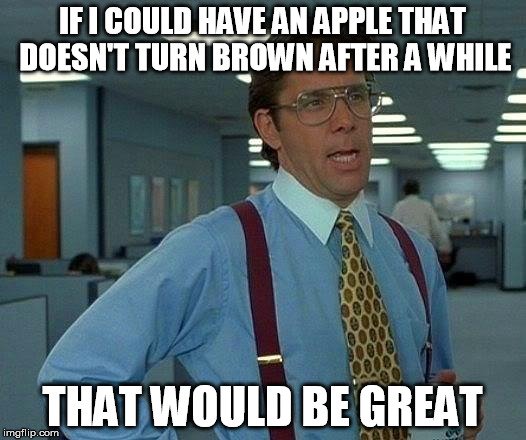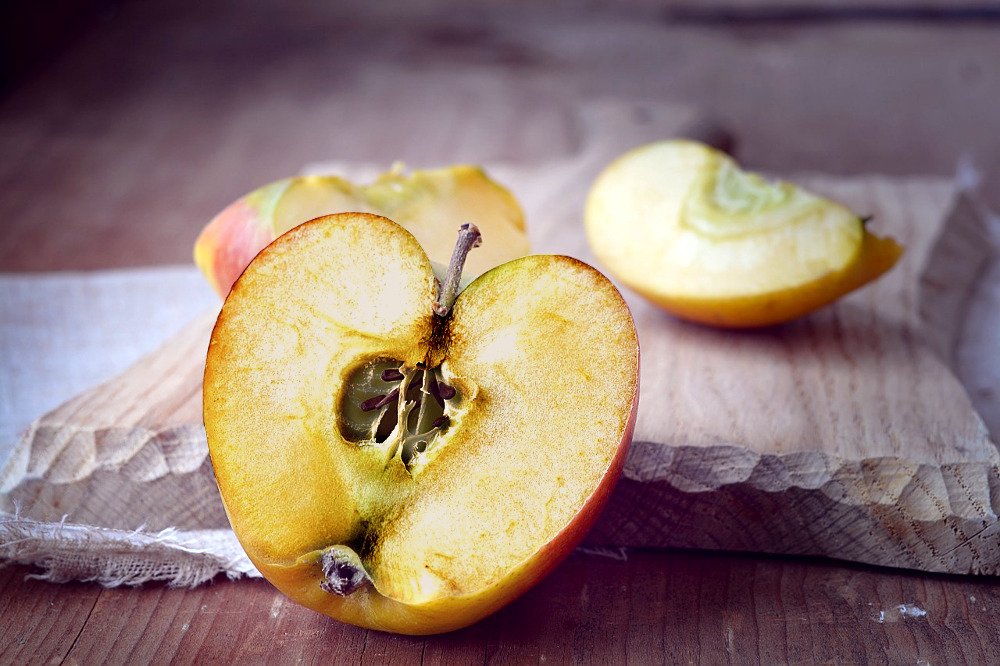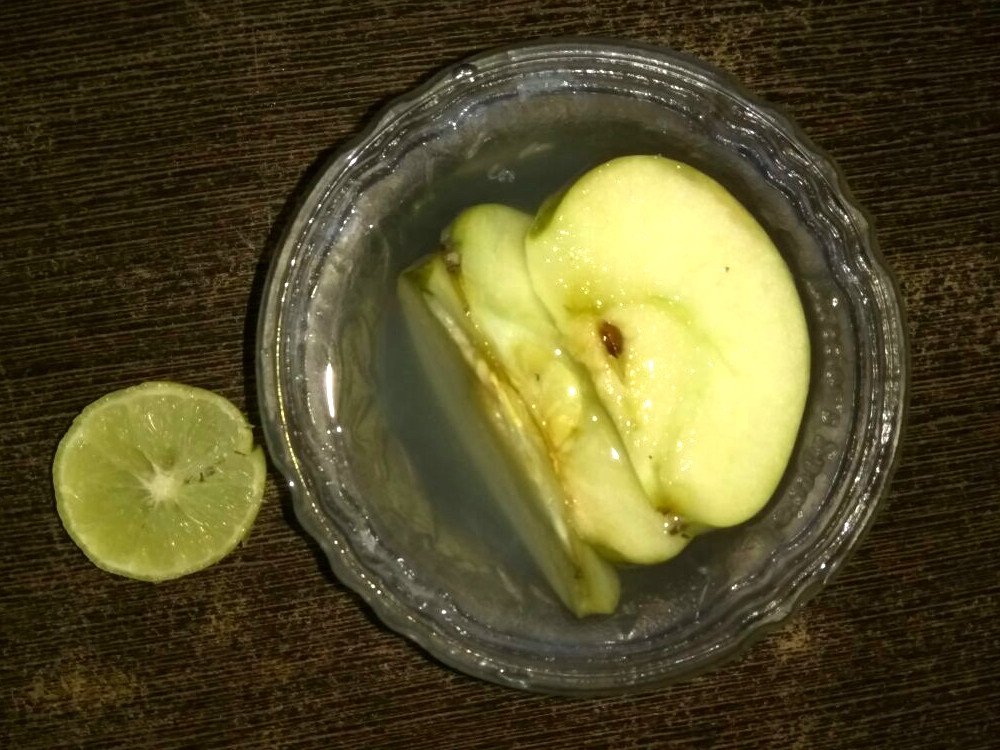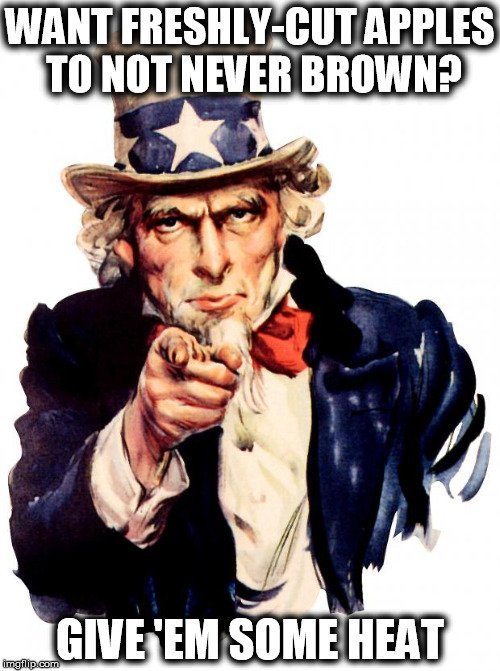Table of Contents (click to expand)
A freshly cut apple eventually turns brown after being exposed to air because its cells contain an enzyme called polyphenol oxidase. When this comes in contact with oxygen present in the environment, it turns the phenolic compounds present in the apple tissues into brown-colored products, imparting a brownish tinge to the freshly cut apple.
I have always been fond of apples. They’re sweet, juicy, crispy and most importantly, they keep doctors away!
But they do have a major drawback – freshly cut apples, if left in the open, eventually turn brown. Well, technically, it’s not their drawback, but it’s certainly something that makes it a less ideal fruit for people who eat slow!

The question is, why do freshly cut apples turn brown? And perhaps more importantly, what can be done to keep apples from taking on that brownish hue?
The ‘Browning’ Of An Apple
Take a bite, or as many as you want, from a fresh, bright red apple, but make sure you finish off the apple soon after, i.e., never make the mistake of taking a bite or two and then leaving it in the open for an hour, unless you want to eat a flaccid brownish mess that was once your apple.
It seems that apples have a self-destruct switch inside them that gets activated the moment you cut it with a knife or take that first bite. It gradually starts to turn brown and mushy. To a 3-year-old who believes that Hogwarts is real (for the record, many adults also believe this), it might seem like some sort of sorcery, but in reality, it’s just science. In fact, this is a classic example of what adults like to call an ‘oxidation reaction’.

Also Read: Can Apples Have Red Flesh?
Oxidation Of A Freshly Cut Apple
We all know that organic matter is made of millions upon billions of tiny cells of varying kinds. These cells also contain different types of enzymes. One of those enzymes that is present in the flesh of both apples and humans is called Polyphenol Oxidase (commonly abbreviated as PPO).
When an apple is cut, the oxygen present in the surroundings comes in contact with the ‘injured’ plant tissue. When this happens, the PPO enzymes (present in the chloroplasts) react with the phenolic compounds (which are naturally present in the apple tissues). In more chemical terms, you’d say that PPO enzymes ‘oxidize’ the phenolic compounds, which is why this reaction is classified as an oxidation reaction.
As a result of this oxidation reaction, colorless o-quinones are formed, which, after a few subsequent chemical reactions (with proteins or amino acids), lead to the browning of any freshly cut apple.

Now that you know what goes on in the background when an apple turns brown, let’s look at a few ways that can prevent this breakdown from happening.
Also Read: What Is Oxidation?
How Can You Keep Apples From Turning Brown?
There are two approaches to dealing with the ‘browning apple’ problem: you can either take out the oxygen from the equation or hinder the functioning of the PPO enzymes.
Taking oxygen out of the system is easy; you just have to cut off the oxygen supply to the half-eaten apple. This can be done in multiple ways – you can coat the apple with sugary syrup, lemon juice or any other citrus fruit juice. This will put a physical barrier between the exposed cells in the flesh and the surrounding oxygen, which will decrease the diffusion of oxygen through the apple’s cells.

Some people simply toss their freshly-cut apples in a bowl of water to cut off their supply of oxygen. It certainly works, but only if you plan to keep them submerged in water for a short time.
In fact, coating an apple with lemon juice not only affects its oxygen supply, but also impacts the function of enzymes. Lemon juice brings down the pH of the environment of the apple, thereby attacking the efficiency of PPO.
A surefire way to stop apples from turning brown is to apply heat to them, either by cooking or briefly blanching them in water.

Heat causes a permanent alteration of the structure of these enzymes (which are basically proteins) due to a process called denaturation (you may have have heard of this term in relation to boiled eggs). Once denatured, these enzymes are no longer capable of turning the apple brown. Therefore, the apple may go bad/spoil due to some other natural process, but it certainly won’t turn that unpleasant shade of brown.
How well do you understand the article above!

References (click to expand)
- Curiosities: Why do apple slices turn brown?. The University of Wisconsin–Madison
- What factors affect the oxidation of apples? | SEP LESSONS - seplessons.ucsf.edu
- Why Are the Apples Brown?. The University of Southern California
- How to Prevent Cut Fruit from Turning Brown | UNL Food. The University of Nebraska–Lincoln
- Science Experiment: The Brown Apple Project - extension.purdue.edu
- Why do apples turn brown when you cut them?. The University of California, Santa Barbara
